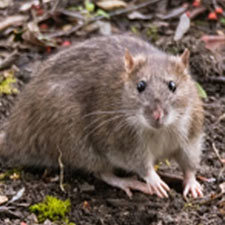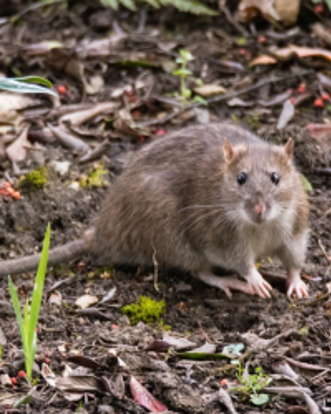 Norway and ship rats
Norway and ship rats
Common name: Norway and ship rats
Botanical name: Rattus norvegicus (Norway) and Rattus rattus (Ship rat)
Management programme: Advisory
Where are they originally from?
- Introduced via whaling ships and ships carrying early European settlers.
- Norway rats came with early settlers in the late 1700s, ship rats did not become established until after 1860s.
Why are they a pest?
- Omnivores that eat a wide variety of prey including birds, seeds, snails, lizards, fruit, weta, eggs, chicks, larvae and flowers.
- Have a significant impact on native biodiversity.
- Varied diet means they compete with native wildlife for food sources.
- Nuisance pest around houses and urban areas.
Where are they found?
Both Norway and ship rats like to live near humans and can be found in houses, waterways and at refuse stations. Norway rats are particularly good swimmers.
What do they look like?
Norway Rat
Larger than a ship rat, it has a blunt nose, small eye, small ears, a thick heavy body and tail that is shorter than head and body.
Ship Rat
Smaller than a ship rat, it has a pointed nose, large eye, large ears, long slender body and a tail that is longer than the head and body.
What are the rules?
Advisory
Council does not enforce the control of advisory species. It is landowner/occupier responsibility to manage these pests. Council may provide advice on how to manage or control advisory species if required.
How do you get rid of them?
- Trapping
- Poisoning
CAUTION: When using pesticide please READ THE LABEL thoroughly to ensure that all instructions and safety requirements are followed. When using traps please ensure that all instructions, safety requirements and laws (in particular the Animal Welfare Act 1999) are followed.
NAWAC (National Animal Welfare Advisory Committee) approved kill traps need to be set as per the manufacturers guidelines.
Guidelines on trap use https://www.mpi.govt.nz/animals/animal-welfare/animal-welfare-and-pest-management/traps-and-devices/
DISCLAIMER: Information in this fact sheet regarding pesticides does not necessarily appear on the labels of the products concerned. Bay of Plenty Regional Council does not accept liability for any damage that may arise from the use of pesticides at non-standard rates. Mention of product trade names implies neither endorsement of those products nor criticism of similar products not mentioned. Bay of Plenty Regional Council does not accept liability for any damage or injury that may arise from the use of traps, toxins and firearms.
Read more on pest control guidelines and regulations

Image credit: Otago Regional Council
